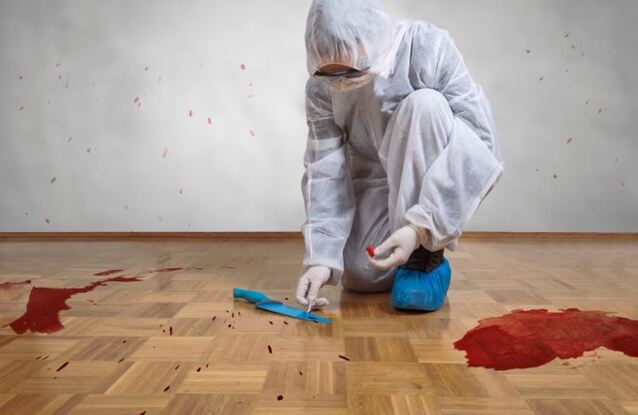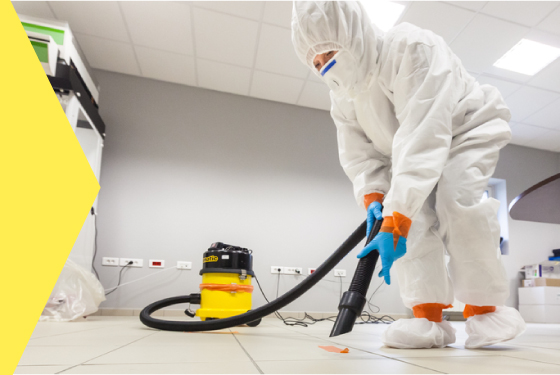Professional Biohazard Cleaning and Decontamination for Blood, Bodily Fluids, and Hazardous Materials
The possible health threats associated with direct exposure to biohazards highlight the critical need for thorough handling and extensive cleaning. As we navigate the detailed landscape of biohazard clean-up, comprehending the nuances of guidelines, compliance, and the specific tools at play becomes necessary in ensuring a comprehensive and safe purification procedure.
Wellness Risks of Biohazard Exposure
Exposure to biohazards presents substantial health and wellness dangers that can cause severe repercussions for communities and people alike. Biohazards incorporate a large range of organic materials, including blood, bodily liquids, mold and mildew, bacteria, viruses, and other potentially contagious materials. When individuals come right into call with these biohazards, whether via accidents, improper handling, or environmental exposure, they deal with the danger of contracting major diseases or diseases.
One of the primary wellness risks related to biohazard direct exposure is the transmission of transmittable conditions. Bloodborne virus such as HIV, liver disease B and C, and different bacteria can be present in biohazardous products, posturing a straight danger to human health and wellness. Inhaling air-borne biohazards like mold and mildew spores or entering contact with contaminated surface areas can additionally cause respiratory issues, allergies, and other damaging wellness impacts.
Moreover, biohazard exposure can have long-lasting health effects, with some illness manifesting years after the initial call (Blood Cleanup). As a result, it is essential to focus on appropriate biohazard cleansing and purification to minimize these health dangers and make sure the safety of people and neighborhoods

Specialized Educating for Biohazard Cleanup
When it concerns taking care of biohazard clean-up successfully and safely, specialized training plays an essential role in ensuring correct decontamination procedures are adhered to. Biohazard cleaning requires specific knowledge and skills to properly mitigate risks related to bloodborne microorganisms, bodily fluids, and harmful materials. Specialists educated in biohazard cleanup undergo extensive direction on exactly how to securely take care of, get rid of, and deal with biohazardous products to stop contamination and direct exposure.
Specialized training for biohazard cleanup covers a variety of essential topics, including proper personal safety equipment (PPE) usage, bloodborne pathogen awareness, decontamination methods, and contaminated materials disposal methods. People learnt biohazard clean-up are furnished with the essential experience to assess contamination levels, identify prospective threats, and apply suitable cleanup treatments in conformity with regulative standards.
Continual training and education and learning are paramount in the field of biohazard cleaning to remain upgraded on the most up to date decontamination technologies, safety methods, and guidelines. By investing in specialized training, biohazard cleanup specialists can successfully respond to emergency cleaning situations and guard both public wellness and the environment.
Importance of Correct Purification Strategies
Using appropriate decontamination strategies is essential in biohazard cleaning to successfully eliminate unsafe materials and decrease health and wellness risks. Effective decontamination not only guarantees the elimination of visible traces of blood, physical liquids, and other biohazards yet also targets unseen pathogens that may present major wellness threats if not effectively eliminated. By adhering to strict purification methods, trained experts can significantly minimize the threat of exposure to hazardous microbes, viruses, and germs that might lead to infections or illness.
Proper decontamination techniques involve the usage of specialized equipment and disinfectants that are especially made to neutralize biohazards efficiently. Detailed cleaning and disinfection of contaminated locations are important to stop the spread of virus and make certain a safe environment for residents. Furthermore, the right disposal of biohazardous waste complying with purification treatments is crucial in preventing contamination of various other surface areas or people.

Tools and Devices for Safe Cleanup
The proper devices and tools play an important role in ensuring the secure and efficient cleaning of biohazardous materials. When managing blood, bodily liquids, or unsafe materials, biohazard cleaning specialists rely upon specialized equipment to lessen exposure threats and completely decontaminate the affected area. Personal safety tools (PPE) such as gloves, goggles, coveralls, and masks are vital to protect versus direct call with possibly contagious products. Additionally, biohazard cleansing kits having anti-bacterials, absorbent materials, and biohazard bags are used to safely have and dispose of polluted items. Blood Cleanup.
Advanced cleansing tools like hospital-grade disinfectants, HEPA-filtered vacuums, and misting equipments are used to disinfect surface areas and eliminate biohazards efficiently. Specialized devices such as sharps containers and biohazard waste disposal containers are made use of to safely manage sharp objects and biohazardous waste materials. By using the ideal tools and tools, biohazard cleansing professionals can guarantee a comprehensive clean-up procedure that focuses on security and decreases wellness threats for both workers and owners of the damaged room.
Rules and Conformity in Biohazard Cleaning
Correct adherence to guidelines and compliance requirements is vital in biohazard cleaning to make sure the security of both workers and the environment. Government agencies such as OSHA (Occupational web Safety and Health Administration) and the EPA (Epa) have actually developed certain standards for biohazard clean-up procedures to minimize wellness threats and environmental contamination. These policies cover a series of facets consisting of the handling, transportation, and disposal of biohazardous materials, along with the needed training and protective equipment needed for workers associated with the clean-up procedure.
Biohazard cleaning firms should remain updated with these laws to assure that their procedures satisfy the required safety and security requirements. Failure to view publisher site follow these regulations can lead to extreme repercussions, consisting of fines, lawsuit, and threatening the health of people and the atmosphere. By adhering to rigid regulations and conformity steps, biohazard cleansing companies can efficiently minimize risks and make certain a secure and thorough clean-up procedure for all celebrations entailed.
Conclusion
Finally, biohazard cleaning and purification need specialized training, appropriate strategies, and adherence to policies. Direct exposure to blood, bodily fluids, and unsafe materials positions substantial health dangers, making it critical to use the best tools and devices for safe cleaning. By complying with strict procedures and standards, specialists can effectively reduce the risks linked with biohazard direct exposure and make certain the security of both themselves and others.
As we navigate the complex landscape of biohazard cleanup, recognizing the subtleties of regulations, compliance, and the specific devices at play ends up being imperative in guaranteeing a complete and redirected here secure decontamination process. (Blood Cleanup)
When it comes to managing biohazard clean-up effectively and securely, specialized training plays an essential function in making sure appropriate purification procedures are followed.Making use of correct decontamination strategies is crucial in biohazard cleaning to properly remove unsafe products and lessen health threats. In addition, biohazard cleansing kits containing anti-bacterials, absorptive products, and biohazard bags are made use of to securely have and get rid of of contaminated things.
Federal government agencies such as OSHA (Occupational Safety and Wellness Management) and the EPA (Environmental Protection Company) have actually established certain standards for biohazard clean-up procedures to minimize health and wellness risks and ecological contamination.
Comments on “Hoarder Cleanup Providers: Fixing Order and Security in your house”